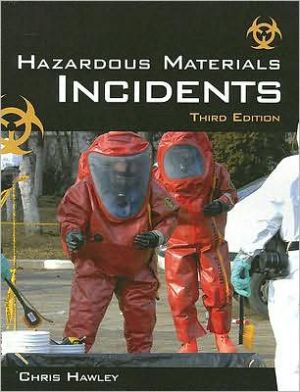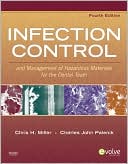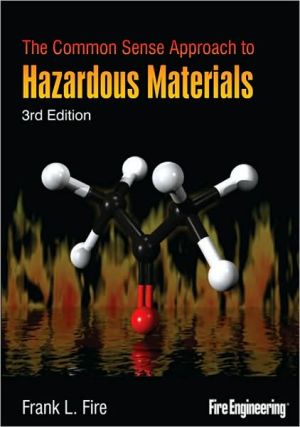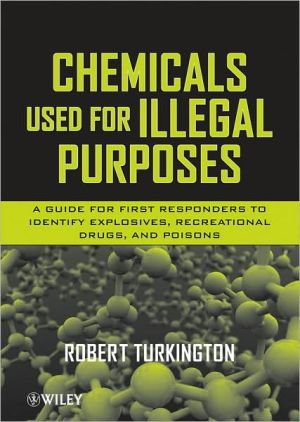Hazardous Materials Incidents
Keeping hazardous materials responders up-to-date with national concerns and emerging technologies, Hazardous Materials Incidents, 3E continues to provide practical knowledge of how to effectively and safely respond to hazardous materials incidents. This book has been updated to cover the competencies of the 2008 Edition of NFPA 472 Standard including comprehensive coverage of Awareness, Operations and Ops + levels. Technical information is translated through a reader-friendly...
Search in google:
In this training guide for handling hazardous materials incidents, Hawley, a HAZMAT responder, trainer, and consultant, not only covers all of the competencies in the 2002 Edition of the NFPA 472 Standard at the awareness levels, but also offers beneficial information on air monitoring, terrorism, and special operations issues. Real-life case studies integrate theoretical strategies with authentic HAZMAT situations to reinforce lessons covered. One chapter is devoted to the interactions between law enforcement, firefighters, and EMS personnel. B&w photos are included. Annotation ©2004 Book News, Inc., Portland, OR
ForewordxPrefacexiAcknowledgmentsxiiReviewersxiiiAbout the AuthorxivIntroduction to Hazardous MaterialsxvNFPA 472 Correlation GuidexviChapter 1Hazardous Materials: Laws, Regulations, and Standards1Objectives3Introduction3Laws, Regulations, and Standards4Development Process4Emergency Planning4State and Local Emergency Response Committees4Local Emergency Response Plans5Chemical Inventory Reporting5OSHA HAZWOPER Regulation7Paragraph q9Medical Monitoring10Standards11NFPA 47111NFPA 47211NFPA 47311Standard of Care11Additional Laws, Regulations, and Standards12Hazard Communication12Superfund Act12Clean Air Act13Respiratory Protection13Firefighter Safety13NFPA Chemical Protective Clothing13Summary13Key Terms13Review Questions14Suggested Readings14Chapter 2Recognition and Identification15Objectives17Introduction17Location and Occupancy17Placards, Labels, and Markings18Placards18Problems with the Placarding System28Labeling and Marking Specifics29Other Identification Systems29NFPA 704 System29Hazardous Materials Information System31Military Warning System31Pipeline Markings32Container Markings33Pesticide Container Markings34Containers34General Containers34Totes and Bulk Tanks37Pipelines38Highway Transportation Containers39Response to Potential BLEVE Situations45Specialized Tank Trucks48Intermodal Tanks51Rail Transportation55Bulk Storage Tanks58Senses63Chemical and Physical Properties63States of Matter63Vapor Pressure65Vapor Density66Specific Gravity68Corrosivity69Chemical Reactivity70Flash Point70Auto-Ignition Temperature70Flammable Range70Toxic Products of Combustion71Summary72Key Terms72Review Questions73Endnotes74Suggested Readings74Chapter 3Information Resources75Objectives77Introduction77Emergency Response Guidebook77Material Safety Data Sheets90Shipping Papers92Mode of Transportation95Facility Documents98Computer Resources98Chemtrec99Reference and Information Texts99Industrial Technical Assistance100Summary101Key Terms101Review Questions101Suggested Readings101Chapter 4Protection103Objectives105Introduction105Health Hazards106Toxicology106Types of Exposures106Types of Hazards106Categories of Health Hazards107Routes of Exposure108Exposure Levels110Types of PPE113Self-Contained Breathing Apparatus114Chemical Protective Clothing115Level A Ensemble116Level B Ensemble118Level C Ensemble119Level D Suits119High Temperature Clothing119Cold Temperature Clothing120Limitations of PPE120Heat Stress121Mobility123Visibility123Communications123Summary123Key Terms123Review Questions124Endnote124Suggested Readings124Chapter 5Protective Actions125Objectives127Introduction127Incident Management Systems127Hazardous Materials Management Processes130Isolation and Protection130Rescue131Site Management134Establishment of Zones134Evacuations and Sheltering in Place138Common Incidents140Types of Releases140Explosives141Gases144Flammable and Combustible Liquids147Flammable Solids/Water Reactives/Spontaneously Combustible147Oxidizers and Organic Peroxides150Poisons151Radioactive151Corrosives152Other Incidents153Decontamination154Types of Decontamination155Emergency Decontamination155Gross Decontamination155Formal Decontamination156Fine Decontamination156Mass Decontamination157Decontamination Process157Methods of Decontamination157Summary165Key Terms165Review Questions166Endnotes167Suggested Readings167Chapter 6Product Control and Air Monitoring169Objectives171Introduction171Defensive Operations171Absorption171Diking and Damming172Diverting174Retention176Dilution176Vapor Dispersion176Vapor Suppression177Remote Shutoffs177Air Monitoring at the First Responder Operations Level177Regulations and Standards178Air Monitor Configurations178Meter Terminology179Bump Test179Calibration179Reaction Time180Recovery Time180Relative Response180Oxygen Monitors180Oxygen Monitor Limitations181Flammable Gas Indicators181Flammable Gas Sensor Types182Toxic Gas Monitors183Other Detectors184Carbon Monoxide Incidents185Summary187Key Terms187Review Questions188Suggested Readings188Chapter 7Terrorism Awareness189Objectives191Introduction191Types of Terrorism196Potential Targets197Indicators of Terrorism199Incident Actions201General Groupings of Warfare Agents203Nerve Agents203Incendiary Agents204Blister Agents (Vesicants)204Blood and Choking Agents204Irritants (Riot Control)205Biological Agents and Toxins205Radioactives207Other Terrorism Agents207Detection of Terrorism Agents207Test Strips208Colorimetric Sampling209Handheld Electronic Detection Devices209Biological Agent Detection210Federal Assistance211Basic Incident Priorities212Summary213Key Terms213Review Questions214Endnotes214Suggested Readings214Chapter 8HAZMAT and Law Enforcement215Objectives217Introduction217Common HAZMAT Incidents217Blood-Borne Pathogens218Drugs and Chemical Effects218Clandestine Labs218Drug Labs219Explosives Labs221Terrorism Agent Labs222Explosives Incidents223Bomb Squad and HAZMAT Interface223General Rules223Special Situations223SWAT Operations225Intel225Special Considerations225Setup227Emergency Conditions228Evidence Collection229Considerations229Operations and Entry230Summary231Key Terms231Review Questions231Suggested Readings231Glossary233Abbreviations239Index241







